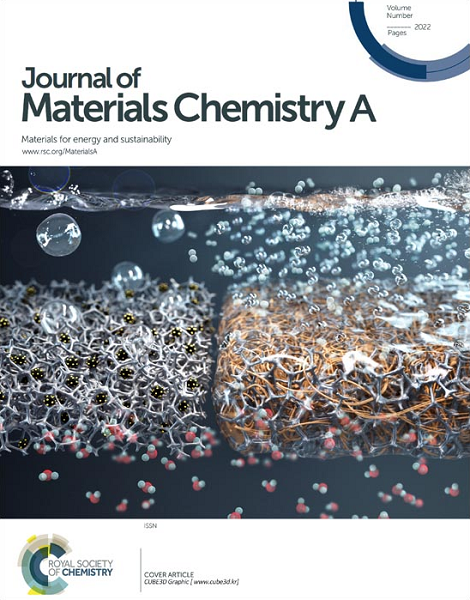酸中性解耦双相电解质增强锌锰电池的沉积-溶解化学
IF 10.7
2区 材料科学
Q1 CHEMISTRY, PHYSICAL
引用次数: 0
摘要
锌锰水电池由于其高能量密度、低成本和优异的可靠性等优点,正在成为下一代储能技术的有希望的候选者。然而,传统的水溶液电解质难以同时满足Mn2+/MnO2阴极和Zn2+/Zn阳极的双重沉积-溶解要求。阴极中Mn2+/MnO2双电子氧化还原反应需要在酸性条件下才能达到616 mAh g−1的理论容量,这是中性和碱性体系的两倍,但这种条件不可避免地加剧了Zn阳极的腐蚀和不良的析氢反应。为了解决这一基本冲突,本研究设计了一种自分层的水-有机双相电解质,成功地解耦了锰阴极和锌阳极的工作条件。采用这种双相电解质的概念验证型锌锰电池能够在酸性水相中实现高效的Mn2+/MnO2氧化还原化学反应,在中性有机相中实现稳定的锌镀剥离,因此实现了~1.8 V的高放电电压,以及250次循环中90%容量保持的稳定循环寿命。这项工作展示了一种在双相电解质中实现酸性和中性条件解耦的有效策略,并为高能锌锰电池的开发提供了见解。本文章由计算机程序翻译,如有差异,请以英文原文为准。
Acidic-Neutral Decoupled Biphasic Electrolytes Enhance Deposition-Dissolution Chemistry in Zn–Mn Batteries
Aqueous Zn–Mn batteries are emerging as promising candidates for next-generation energy storage technologies owing to their advantages including high energy density, low cost, and excellent reliability. However, conventional aqueous electrolytes struggle to meet the dual deposition-dissolution requirements of the Mn2+/MnO2 cathodes and Zn2+/Zn anodes simultaneously. The Mn2+/MnO2 two-electron redox reaction in cathodes demands an acidic condition to achieve a theoretical capacity of 616 mAh g−1, twice that of neutral and alkaline systems, yet such a condition inevitably exacerbates Zn anode corrosion and undesirable hydrogen evolution reaction. To address this fundamental conflict, this study designs a self-stratifying aqueous-organic biphasic electrolyte, which successfully decouples the working conditions of the Mn cathodes and Zn anodes. The proof-of-concept Zn–Mn battery employing this biphasic electrolyte enables efficient Mn2+/MnO2 redox chemistry in the acidic aqueous phase and stable Zn plating-stripping in the neutral organic phase, therefore achieving a high discharge voltage of ~1.8 V, along with a stable cycling life of 90% capacity retention over 250 cycles. This work demonstrates an effective strategy for decoupling acidic and neutral conditions in a biphasic electrolyte and provides insights into the development of high-energy Zn–Mn batteries.
求助全文
通过发布文献求助,成功后即可免费获取论文全文。
去求助
来源期刊

Journal of Materials Chemistry A
CHEMISTRY, PHYSICAL-ENERGY & FUELS
CiteScore
19.50
自引率
5.00%
发文量
1892
审稿时长
1.5 months
期刊介绍:
The Journal of Materials Chemistry A, B & C covers a wide range of high-quality studies in the field of materials chemistry, with each section focusing on specific applications of the materials studied. Journal of Materials Chemistry A emphasizes applications in energy and sustainability, including topics such as artificial photosynthesis, batteries, and fuel cells. Journal of Materials Chemistry B focuses on applications in biology and medicine, while Journal of Materials Chemistry C covers applications in optical, magnetic, and electronic devices. Example topic areas within the scope of Journal of Materials Chemistry A include catalysis, green/sustainable materials, sensors, and water treatment, among others.
 求助内容:
求助内容: 应助结果提醒方式:
应助结果提醒方式:


